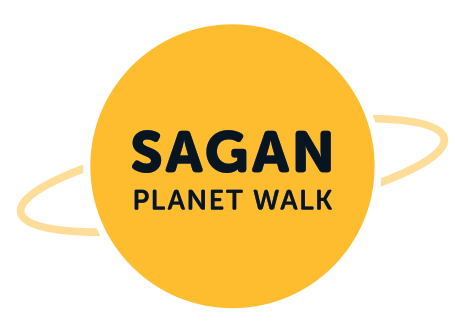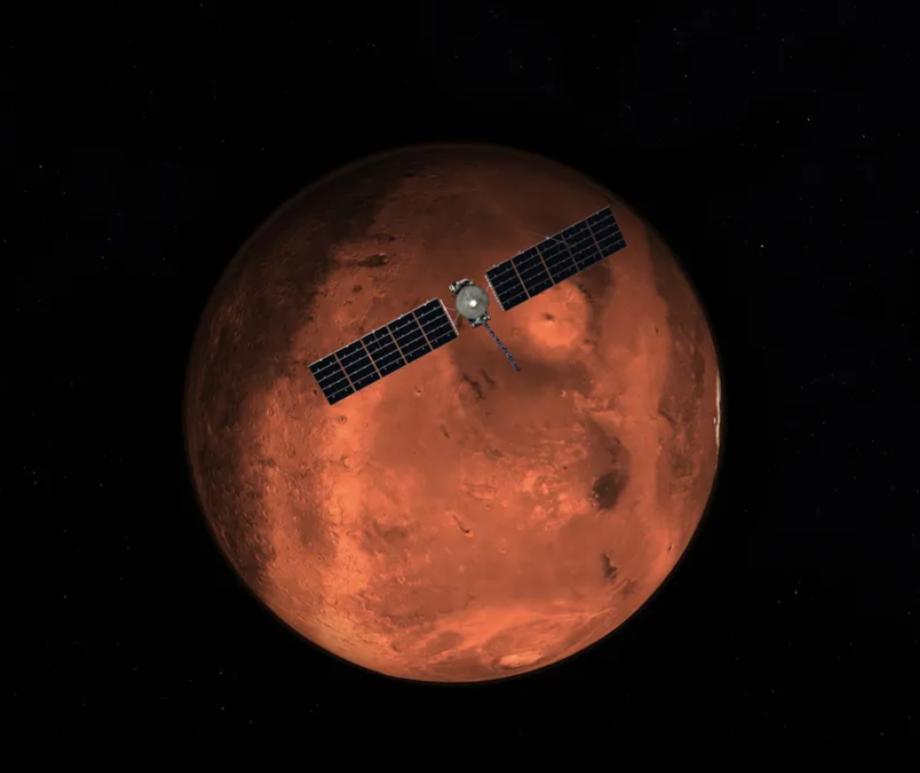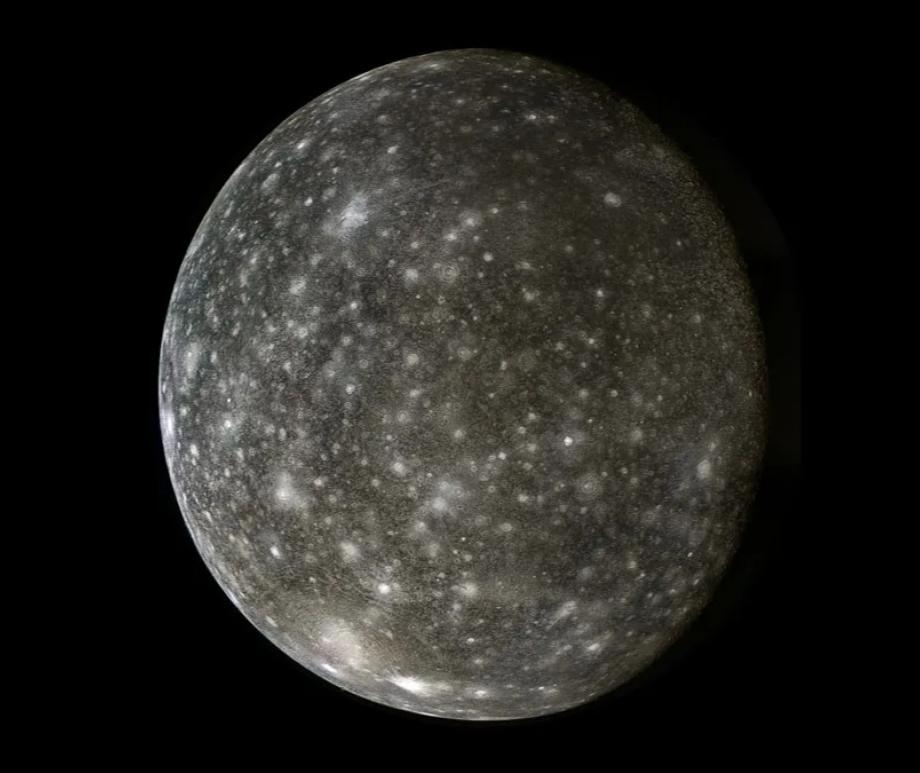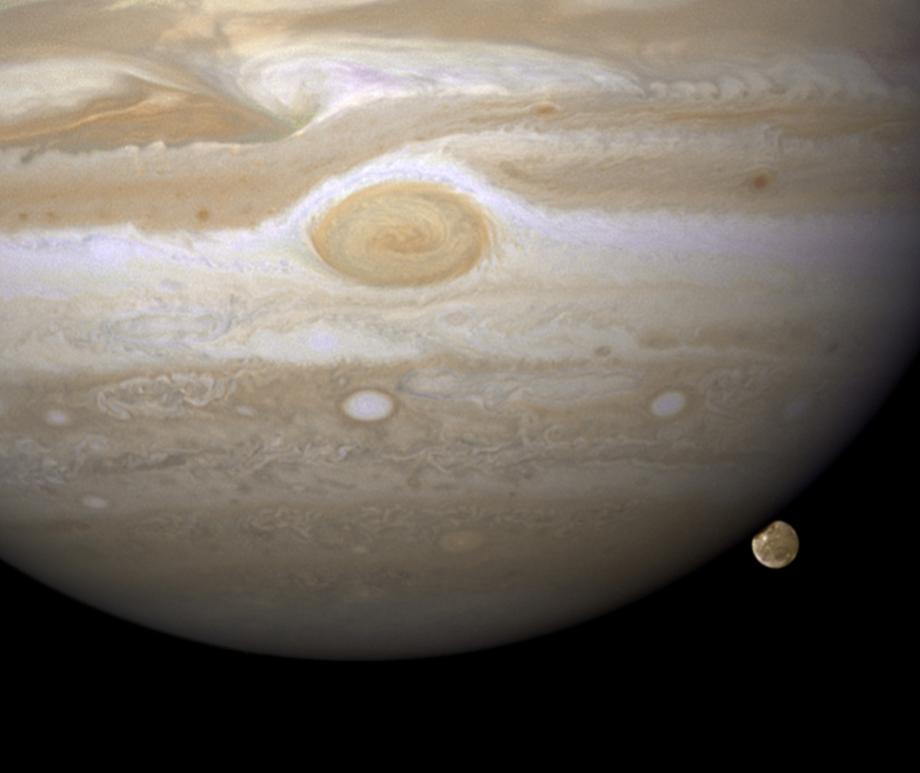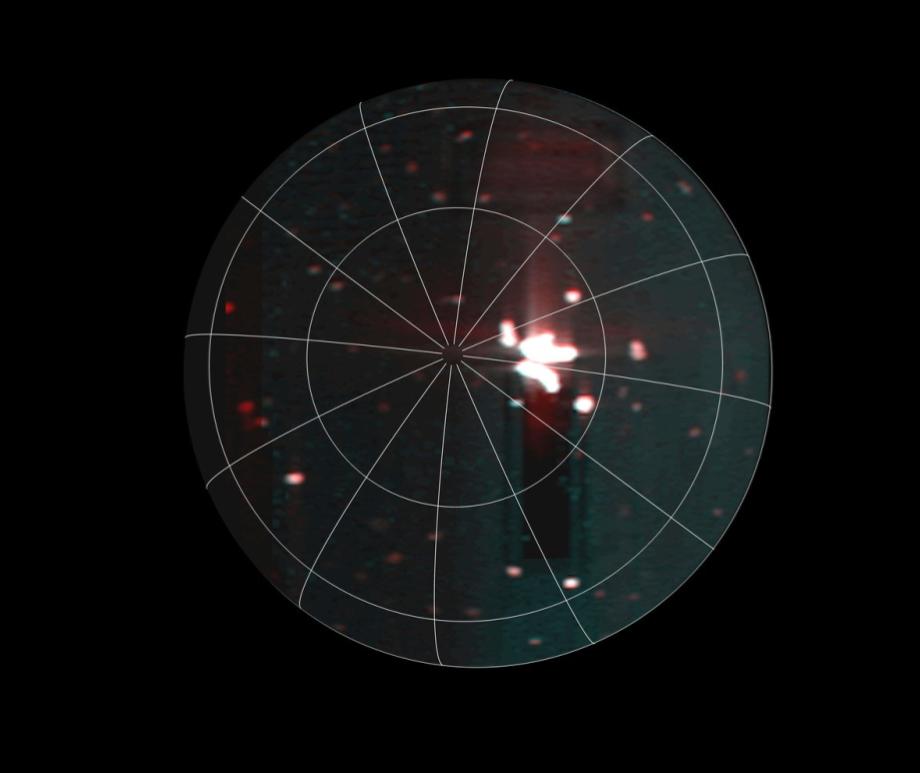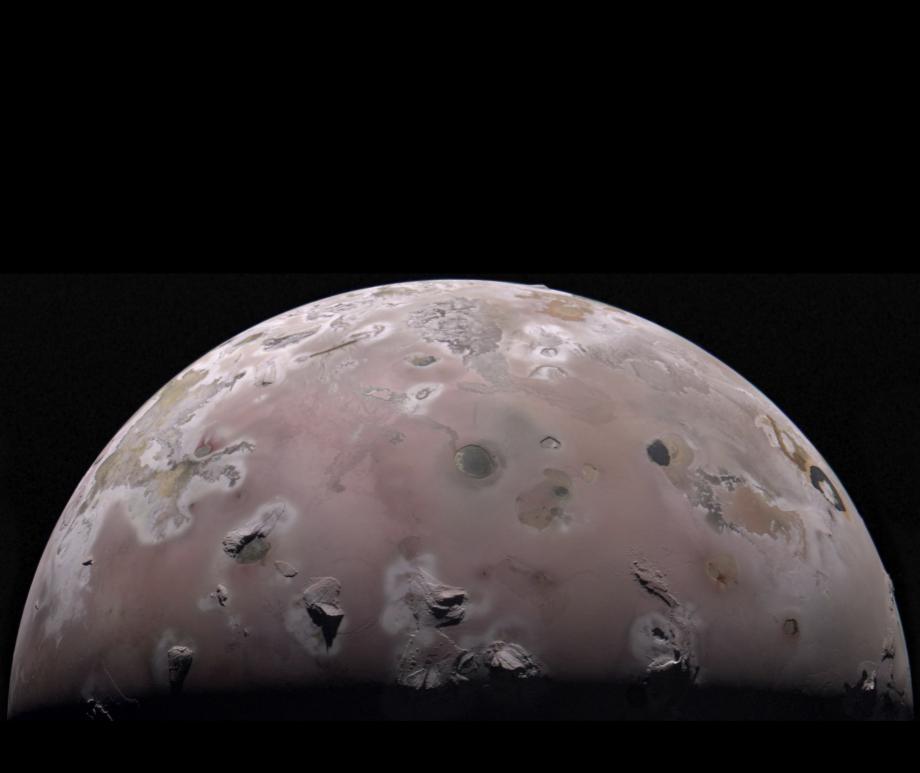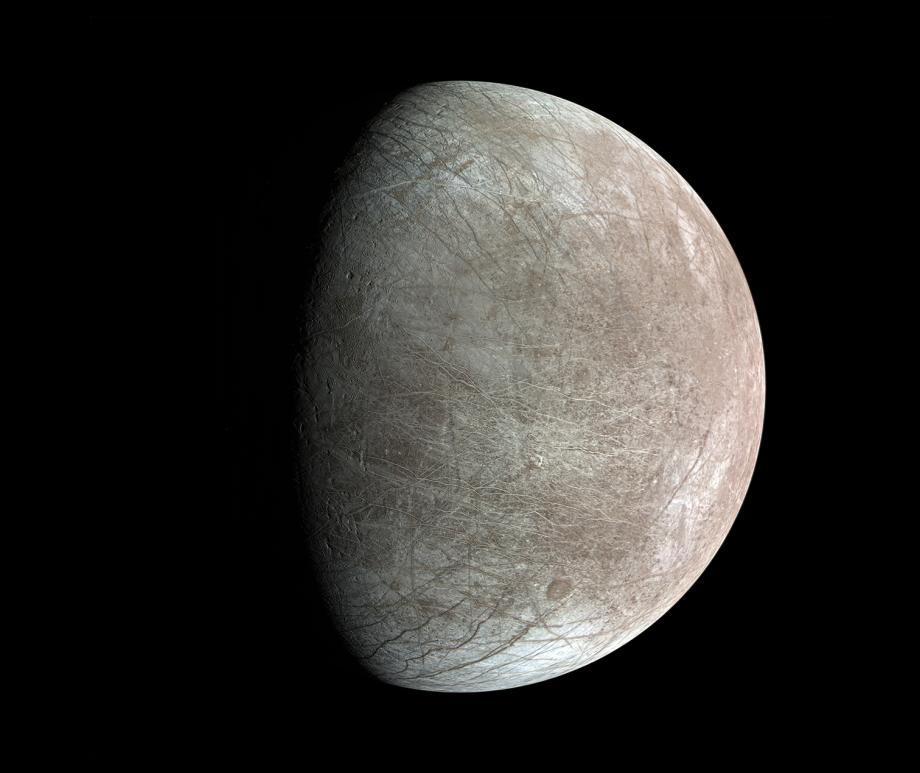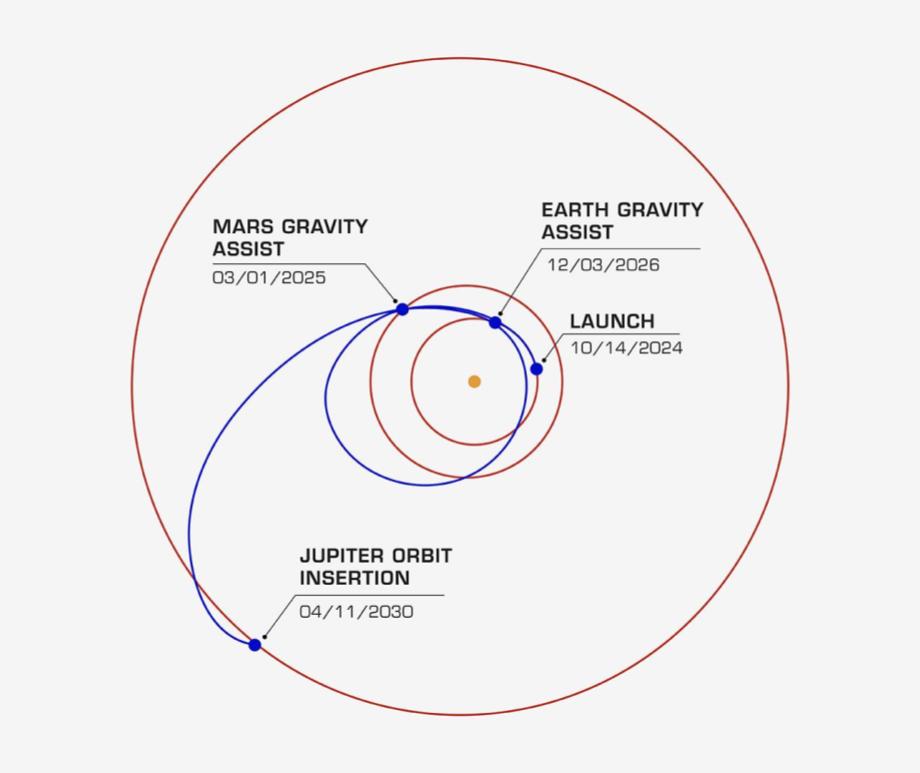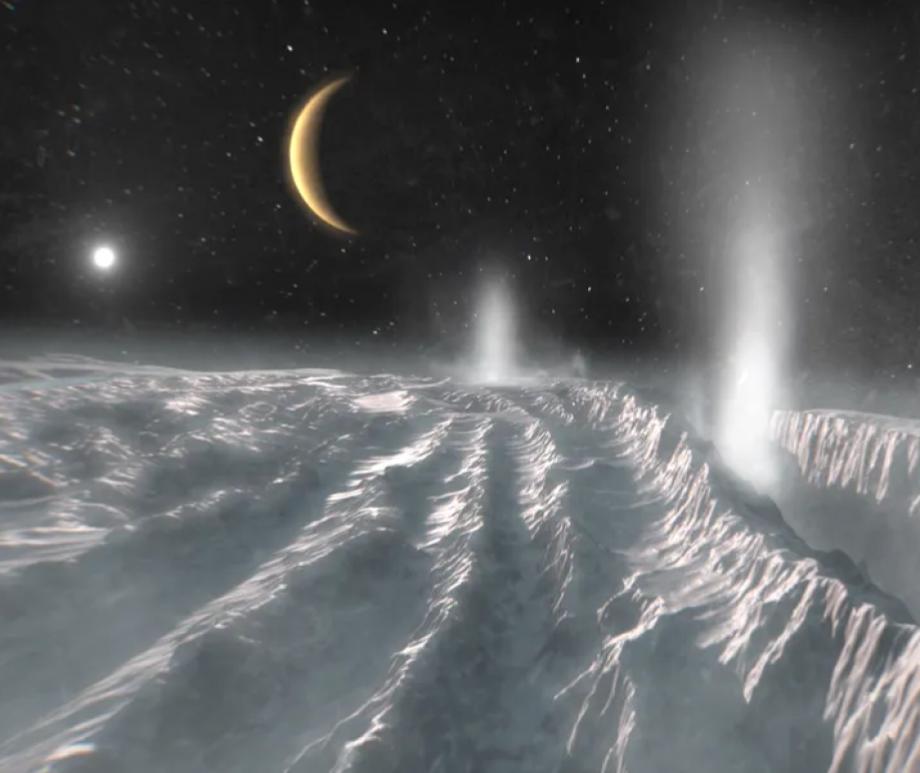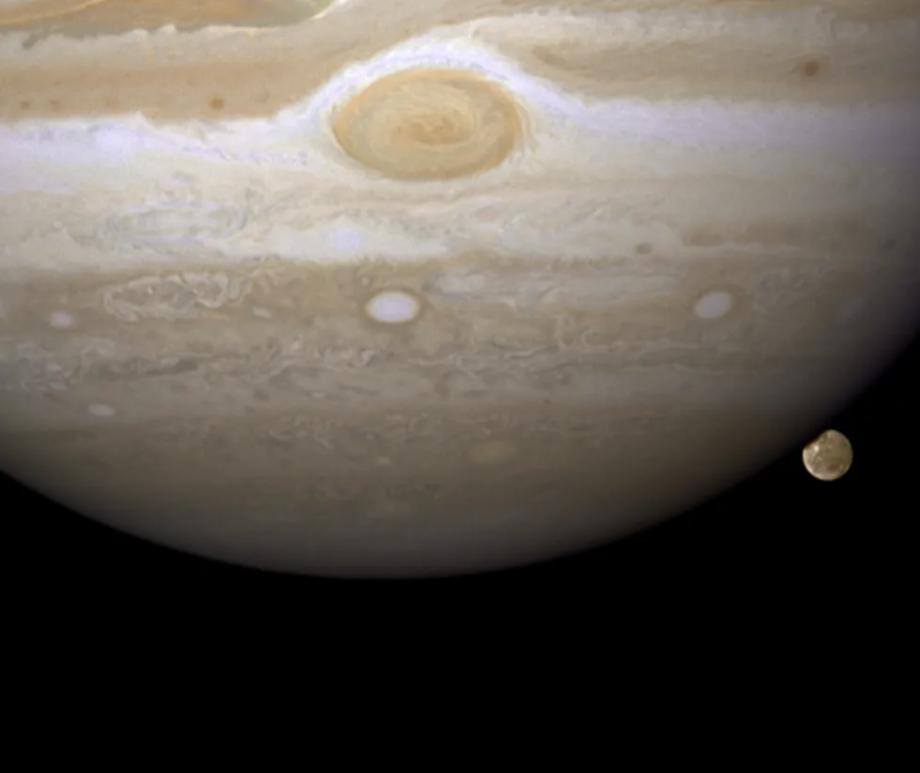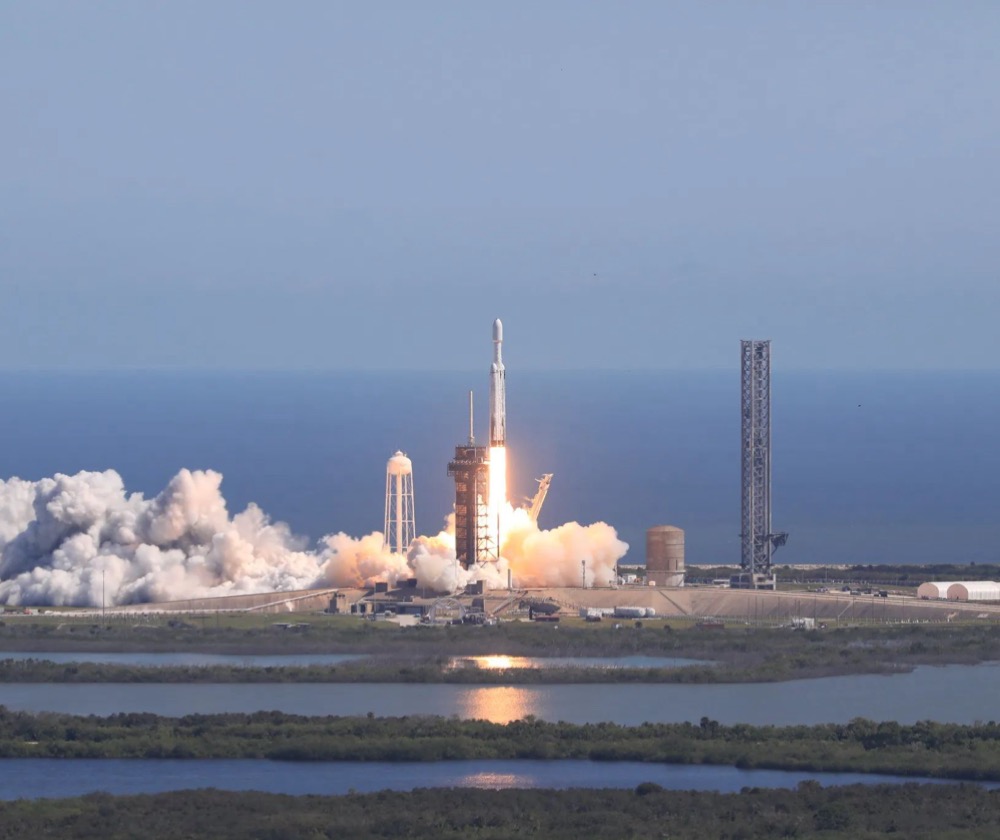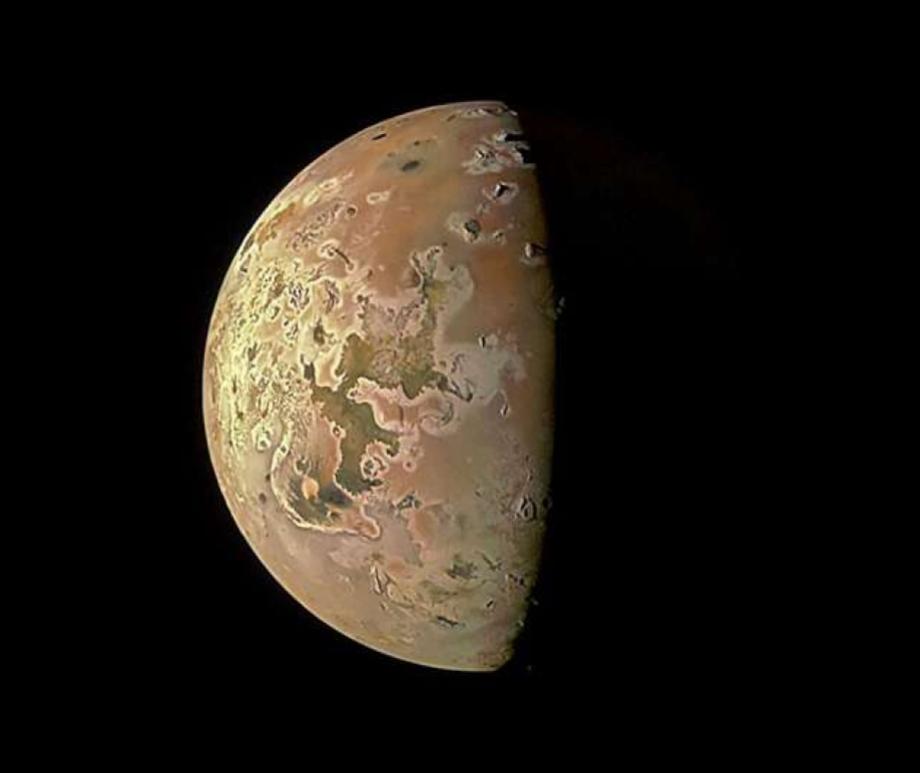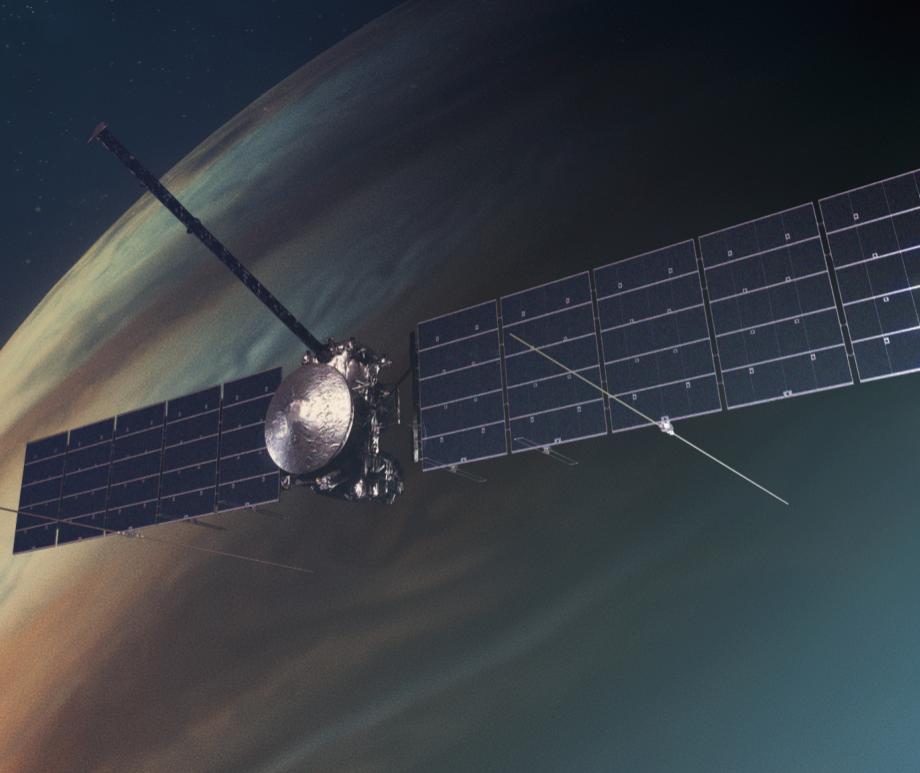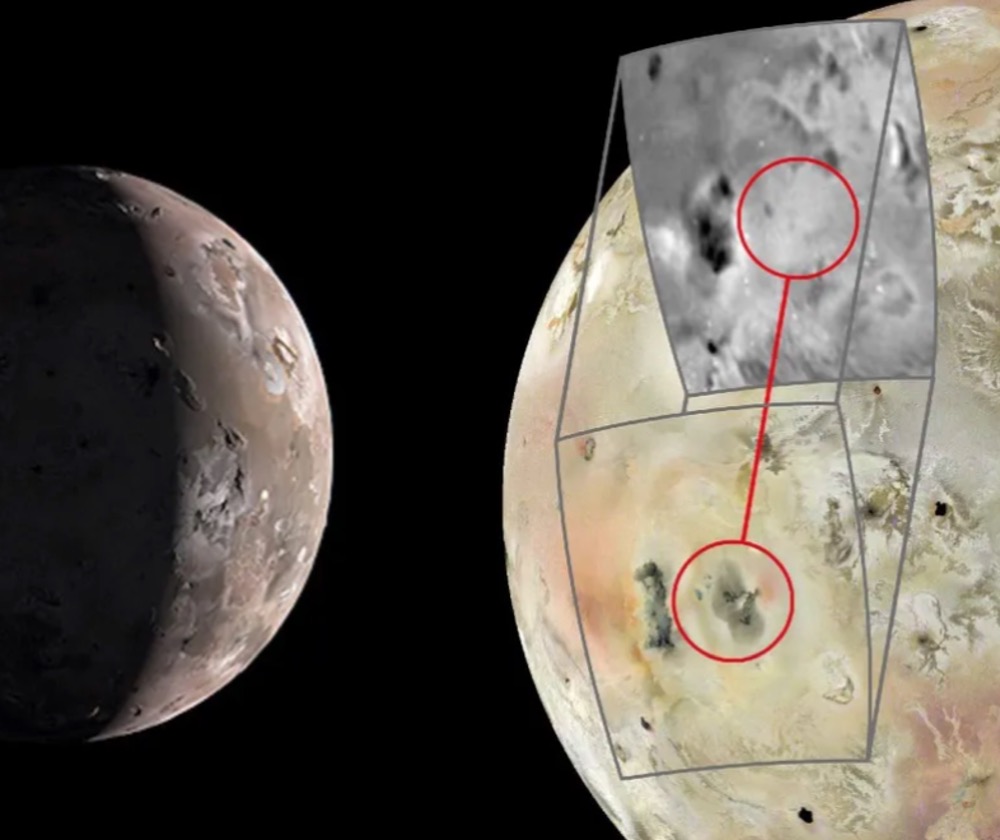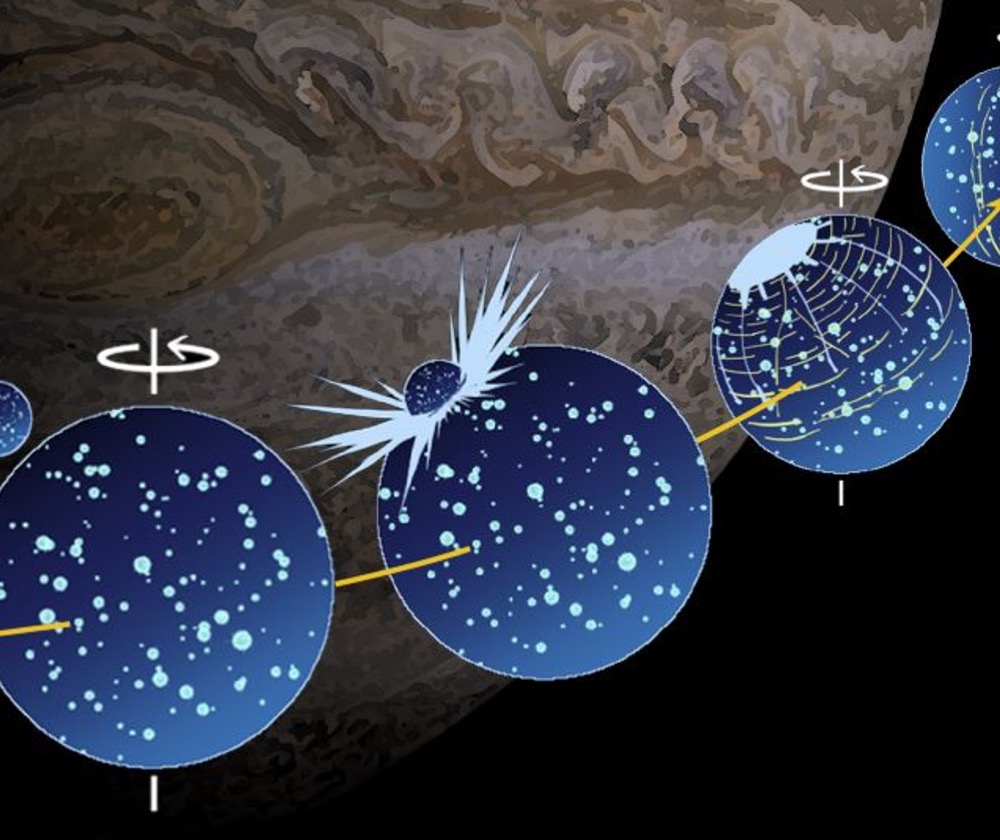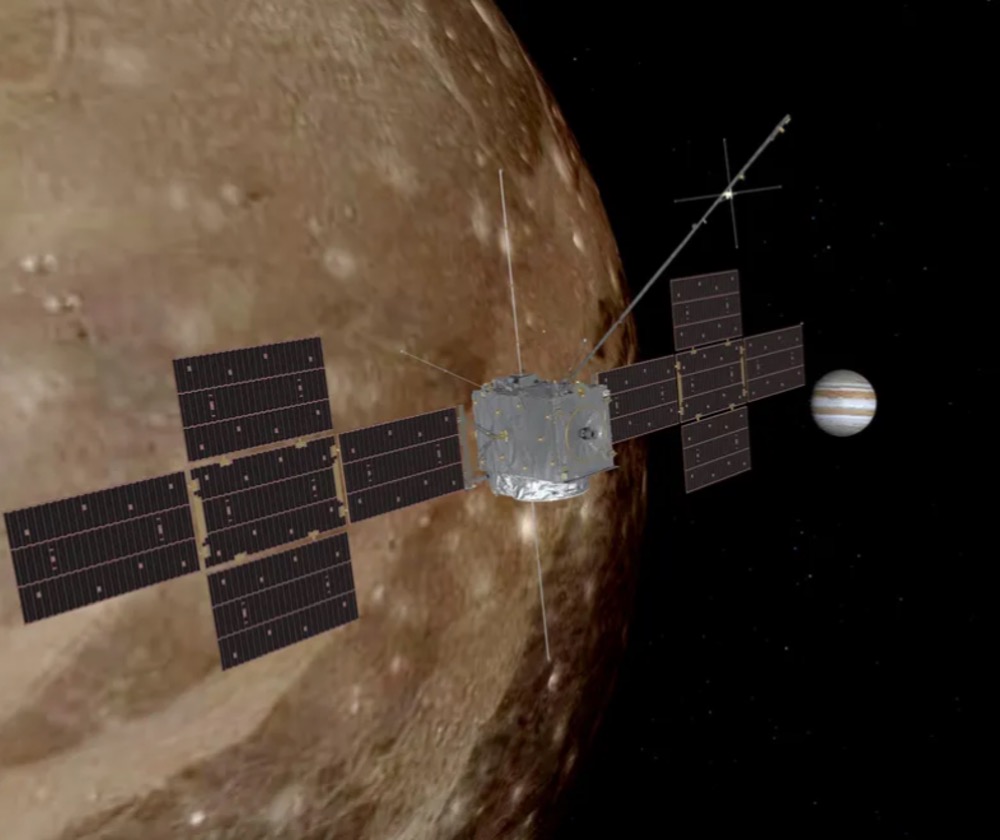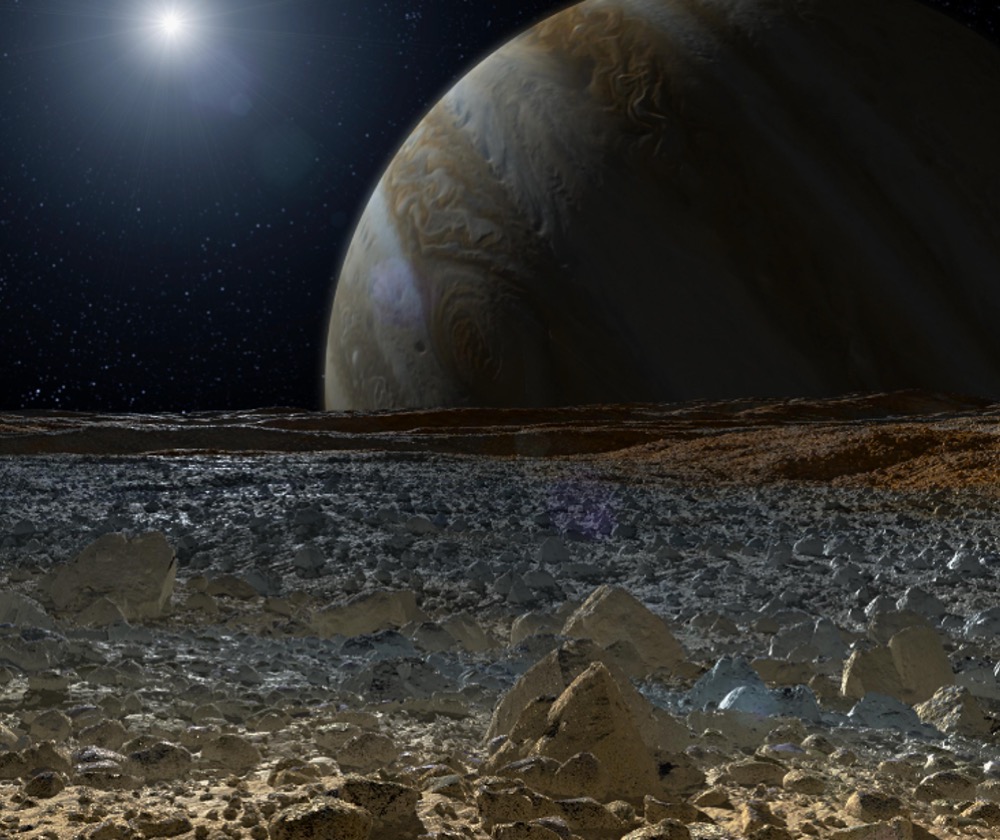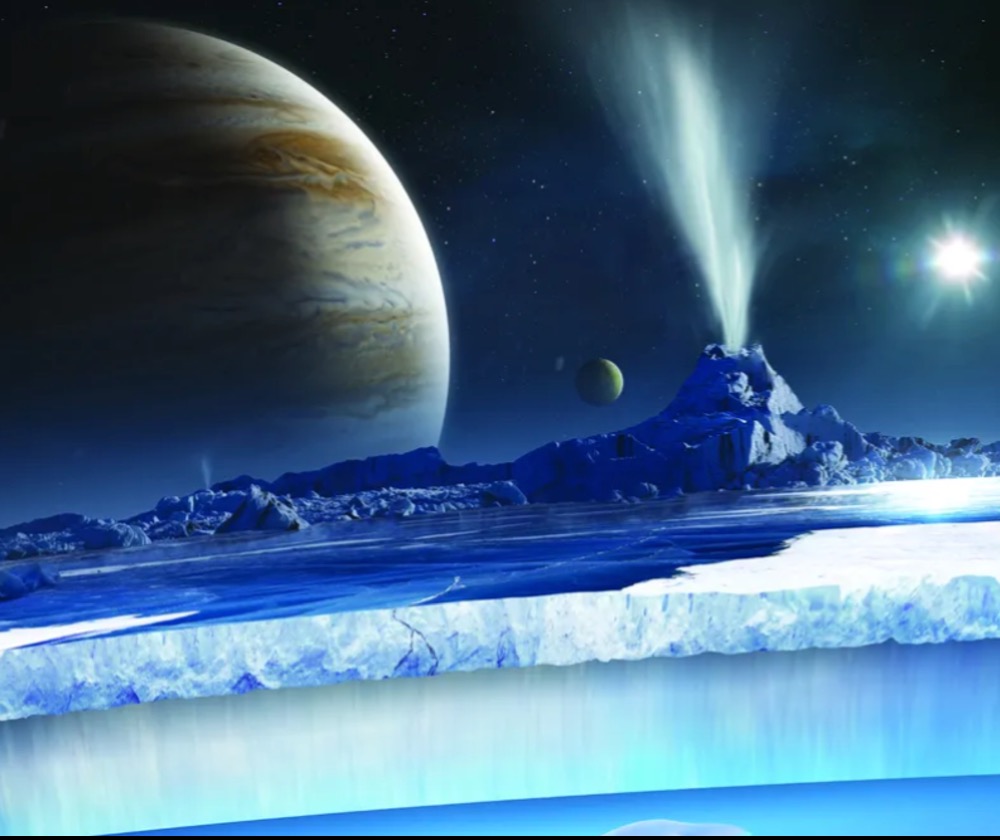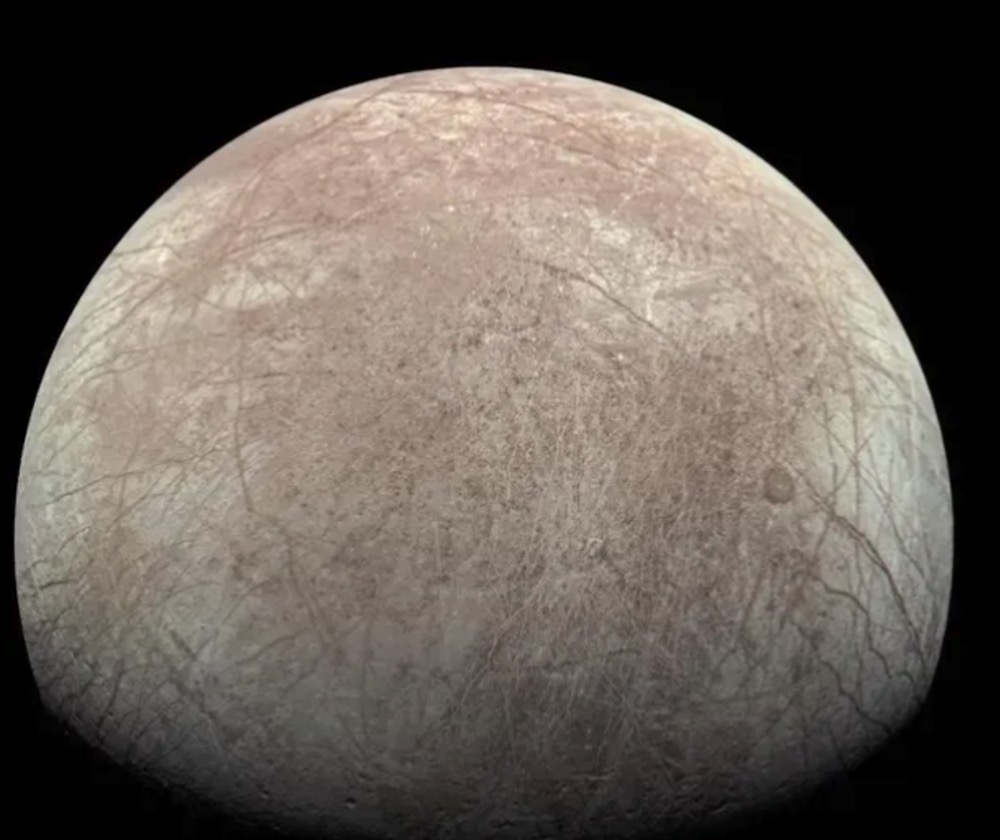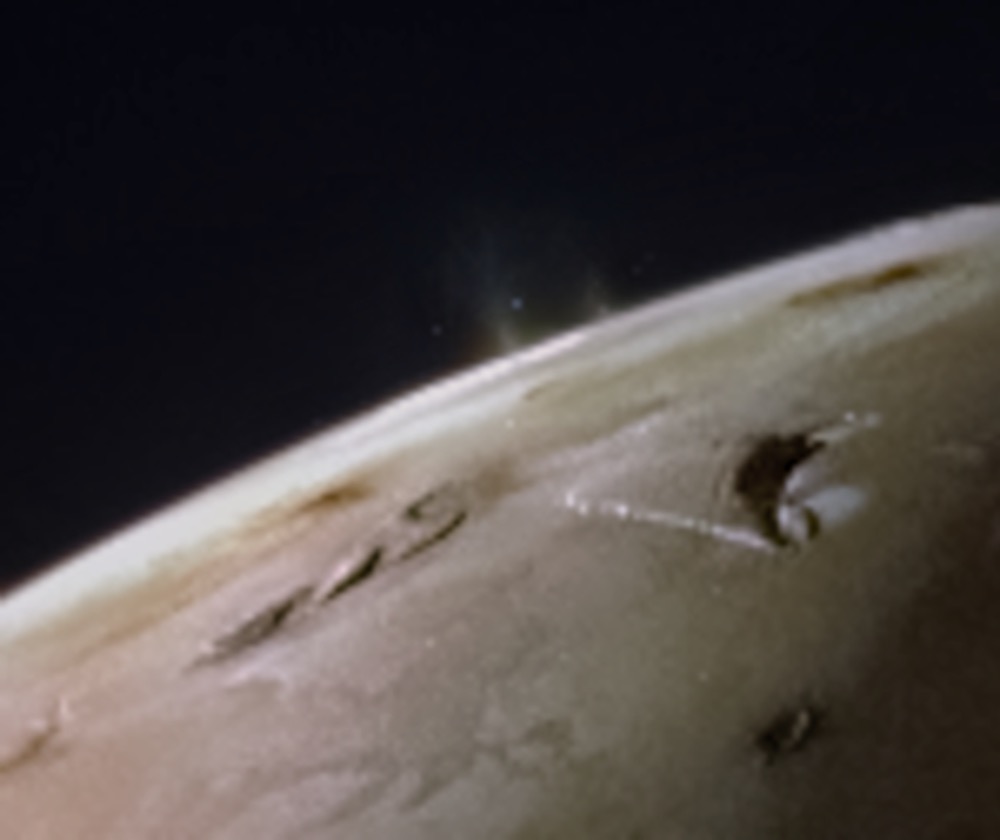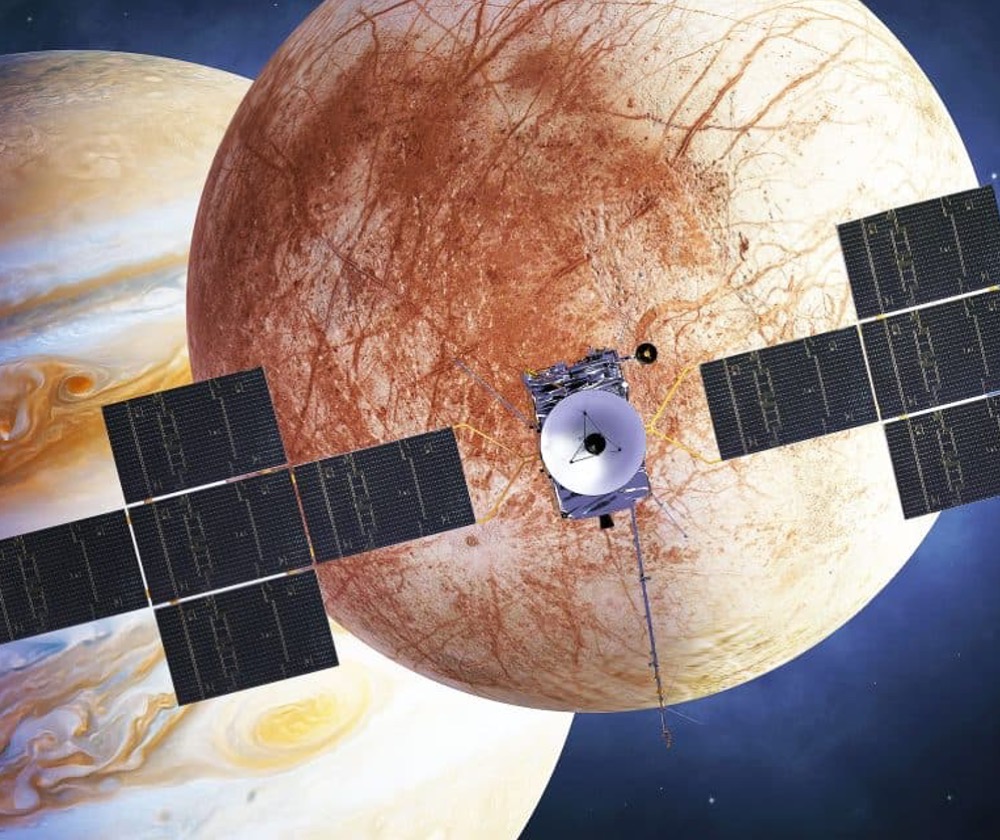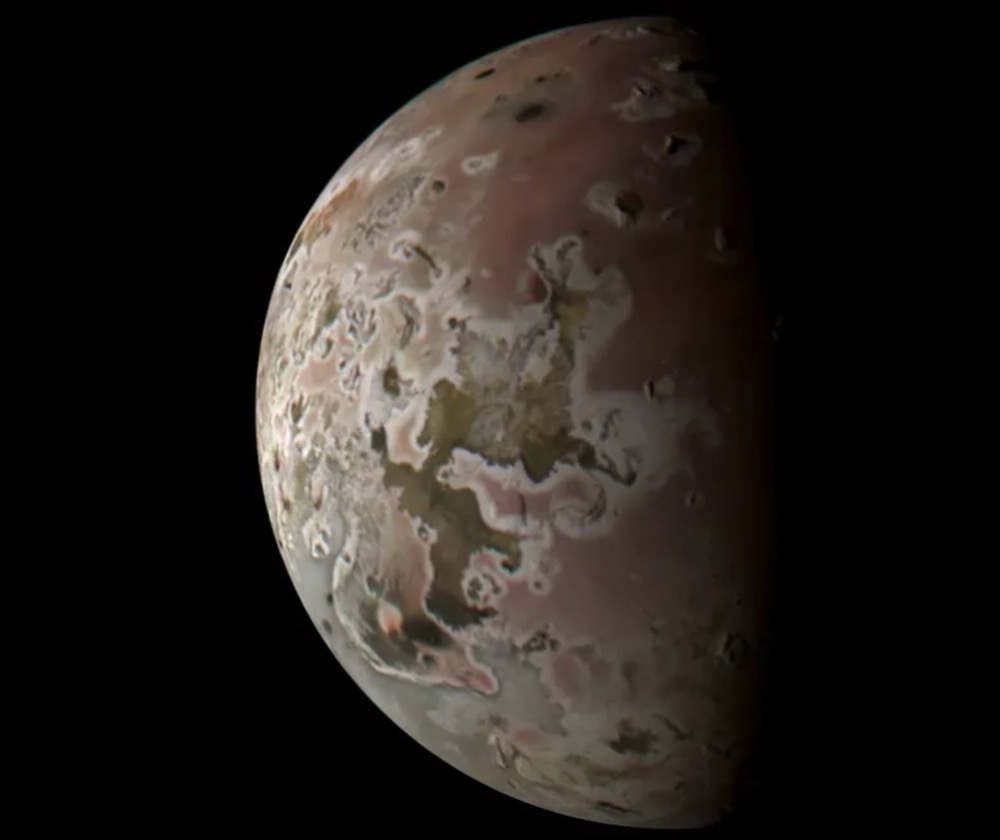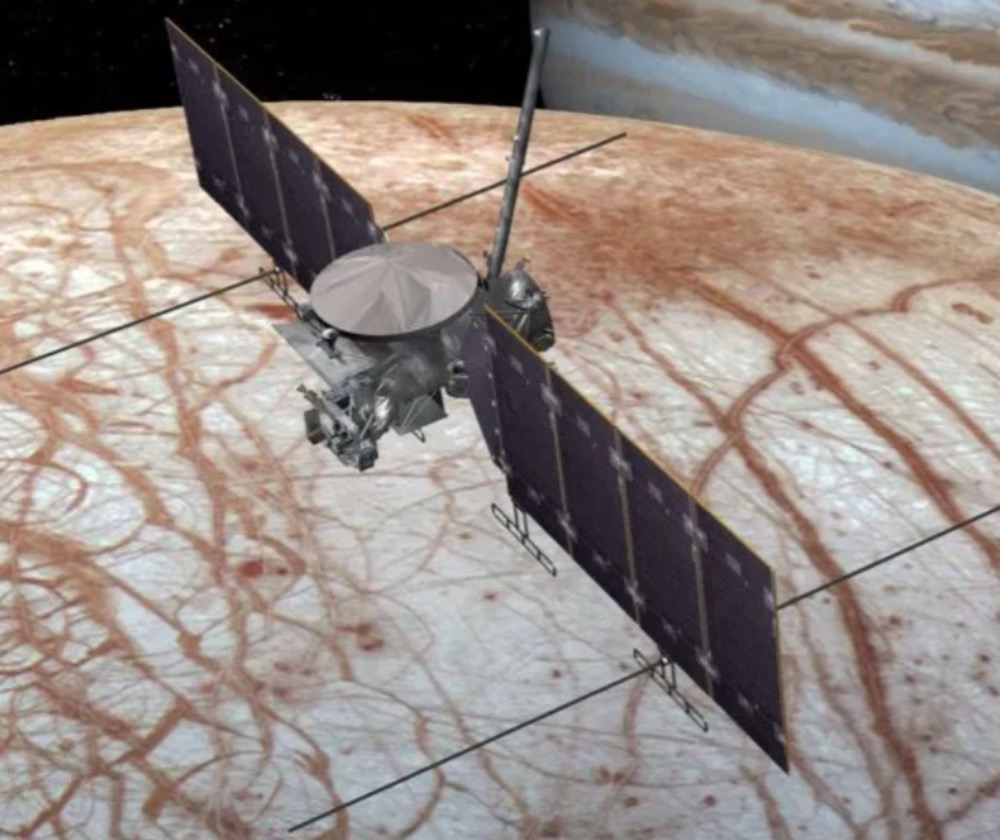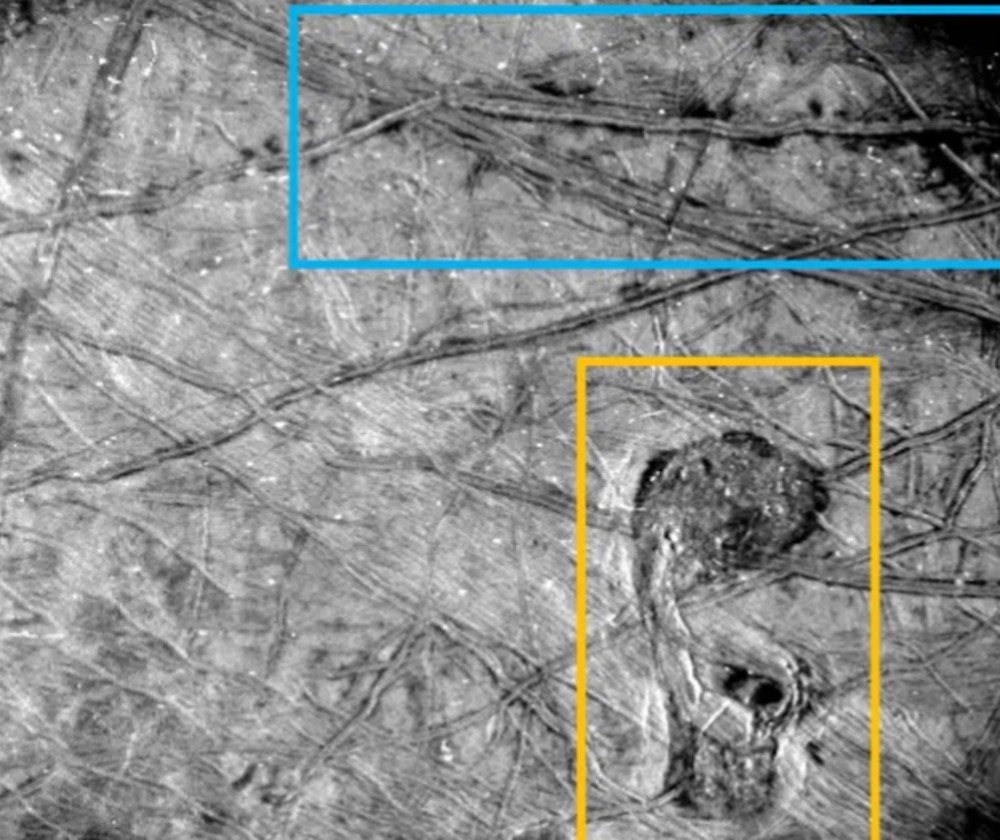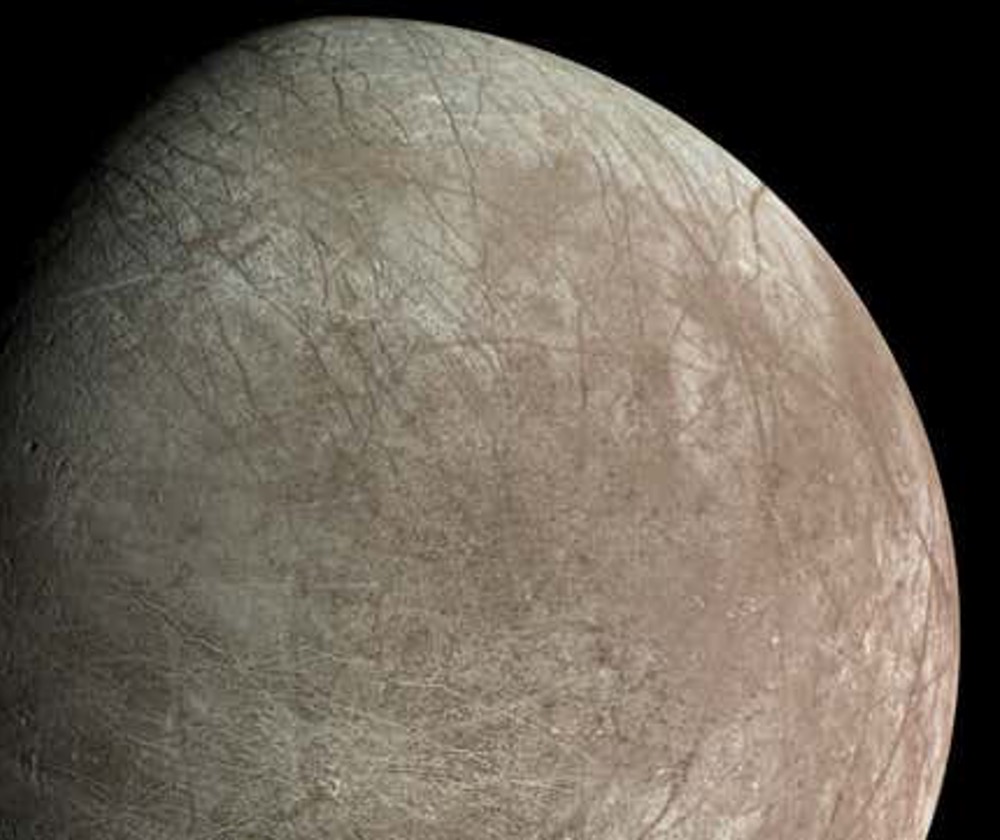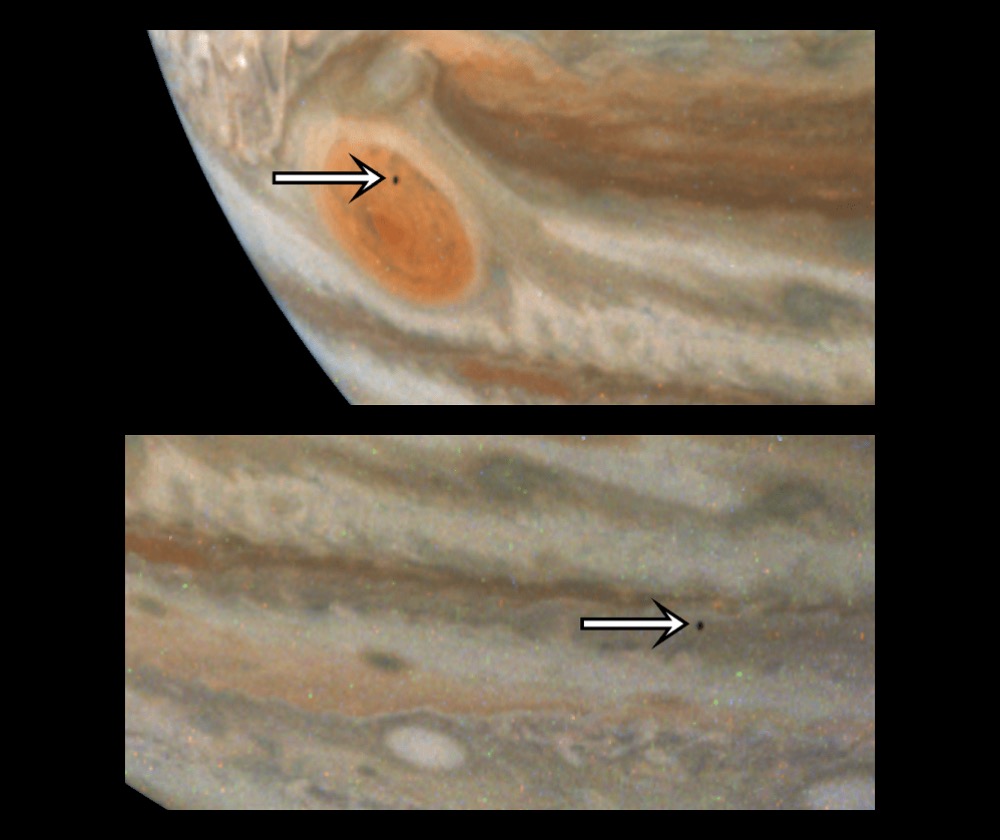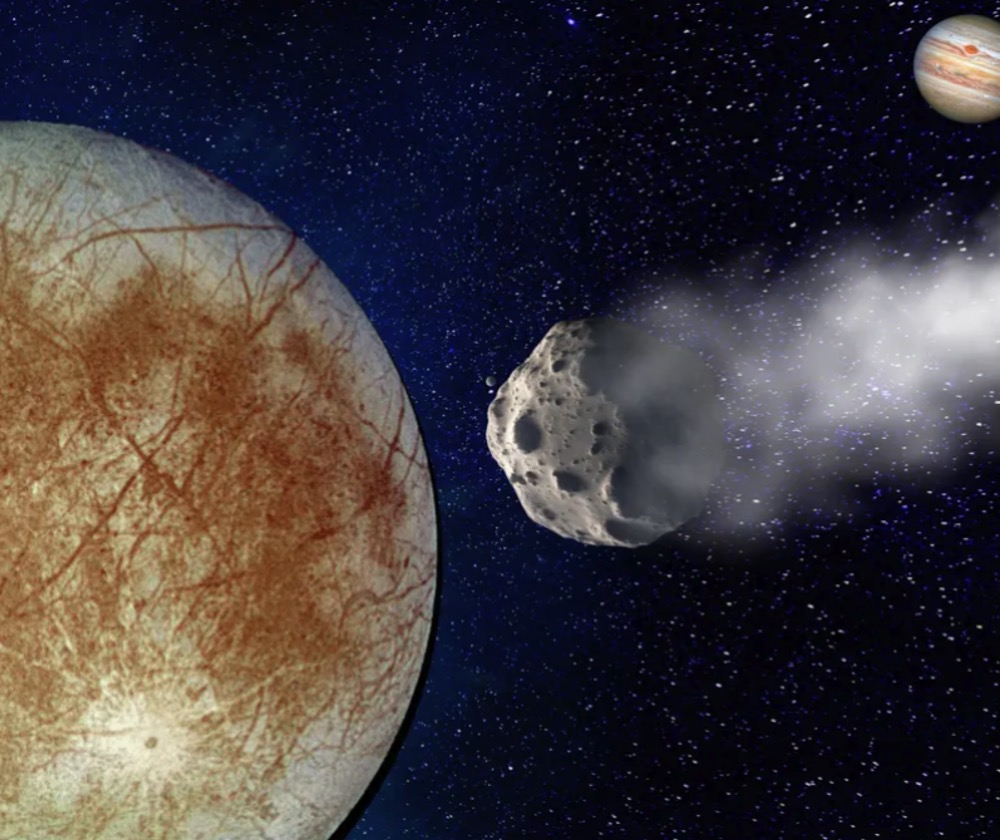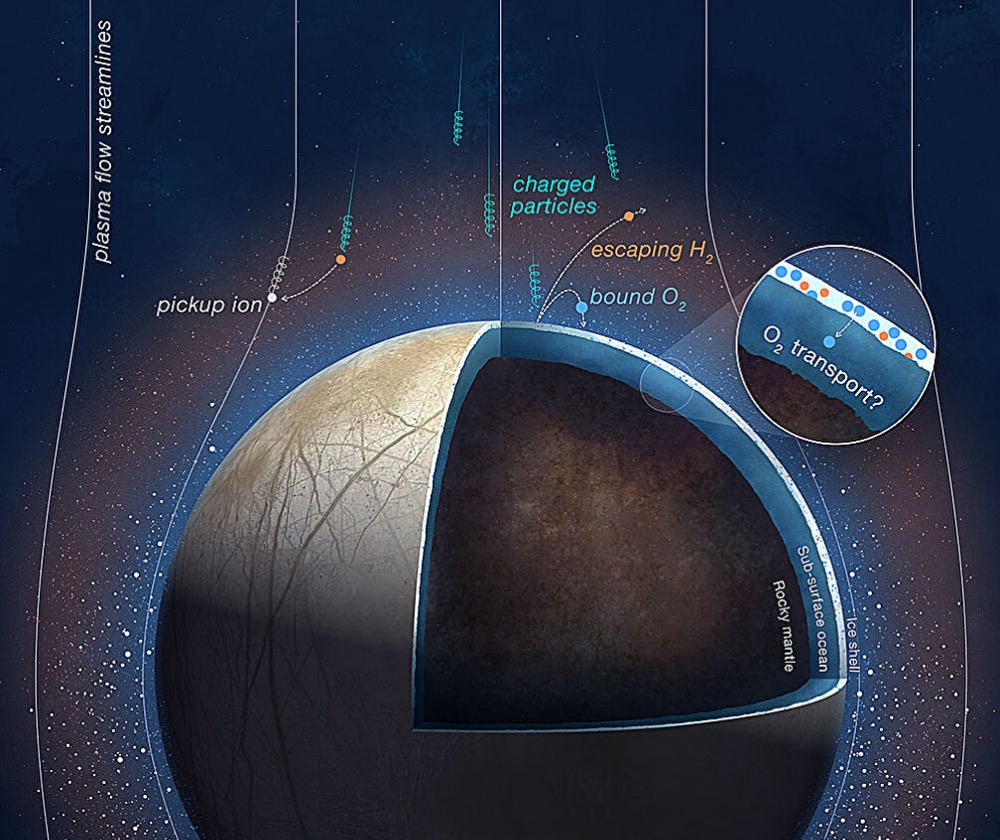Does Europa Have Life?
Jupiter’s orbit is well outside the Sun’s habitable zone, the “Goldilocks” region where temperatures could allow liquid water to exist on a world’s surface. Despite this, one of Jupiter’s moons, Europa, is considered a prime target in the search for current life in the Solar System, not life in the ancient past like Mars and Venus. Beneath its frigid surface, an icy crust 15-25 km (10-15 mi) thick, is an ocean 60-150 km (40-100 mi) deep, so vast that it’s bigger than all of Earth’s oceans combined. The water is salty and there is probably volcanic activity at the rocky bottom, an environment quite like the deep ocean hydrothermal vents on Earth where we see thriving ecosystems that require no sunlight. The Europa Clipper orbiter, launching in 2024, will investigate whether life is down there by measuring the thickness of the ice, the tectonic activity, and the depth and composition of the ocean. Read More
Latest News About Jupiter's Moons
Io

The closest to Jupiter of its four large moons, Io is the most geologically active world in the Solar System. There are over 400 volcanoes, and at any given time about 100 of them are erupting, some spewing sulfur gas 300 km into space. Only slightly larger than Earth’s moon, it is too small to have enough energy for all this activity on its own. Instead, the interior is heated by friction caused by the continuous gravitational tugging and squeezing it experiences from Jupiter and two of the other large moons, Europa and Ganymede. These tidal forces cause Io’s solid surface to move up and down as much as 100 meters. The constant flow of fresh lava and raining down of ash on Io’s surface quickly covers and erases any impact craters, and temperatures are far too high for water, making it quite different from the other three Galilean Satellites.
Europa

One of the most promising sites for life outside Earth, Europa is thought to have an iron core, a rock mantle, a liquid water layer up to 100 km thick containing twice as much water as all of Earth’s oceans, and a 20-km thick crust of ice. Spacecraft instruments have detected a magnetic field being induced inside Europa by Jupiter’s immense magnetic field, leading to the conclusion that the ocean conducts electricity and is therefore salty. Europa has an elliptical orbit so the magnitude of the gravity the moon feels from Jupiter varies as it orbits creating tides that pull at the moon’s icy crust, resulting in fractures in the surface. This flexing also has the potential to generate volcanic activity at the rocky bottom of the ocean, similar to hydrothermal vents at the bottom of Earth’s oceans, providing the thermal and chemical energy required to sustain life. The implications of habitability due to this volcanically active interface between Europa’s ocean and its rocky mantle is what makes it more exciting than oceans inside some other icy worlds.
Ganymede

The largest moon in the Solar System, Ganymede is the only moon that has its own magnetic field. This creates a bubble, called a magnetosphere, within Jupiter’s own intense magnetic field that provides the moon some protection from the massive amounts of radiation the planet produces. The moon has three layers: an inner core of mostly iron; a rocky outer core; a thick mantle layer and outer crust dominated by water ice. It is hypothesized, based on data from spacecraft and laboratory experiments, that this mantle could be made of alternating layers of liquid and frozen water, plus some layers that are a slushy mixture of the two. Some models estimate the amount of liquid water inside Ganymede could be nearly six times the total ocean water on Earth, even greater than Europa. However, being farther from Jupiter, it’s unlikely that there is enough tidal energy from the planet’s gravity to produce the kind of hydrothermal activity thought to exist in Europa’s interior.
Callisto

Jupiter’s second largest moon and the farthest of the Galilean Satellites, Callisto has the oldest and most heavily cratered surface in the Solar System. The surface craters, the result of impacts with comets and asteroids, are still visible and fairly pristine, suggesting there has been very little geologic activity over the moon’s 4.5-billion-year history. Like Europa and Ganymede, it likely hosts an interior ocean, probably more than 200 km below the surface, but like Ganymede its distance from Jupiter means it is unlikely to have enough internal thermal energy to create a habitable environment in that ocean.
Other Moons

Jupiter has a total of 95 known moons, and other smaller and further ones may still remain undiscovered. Of the 91 smaller moons, the largest, Amalthea, measures only 250 km across on its longest axis, over 10 times smaller than Europa, the smallest of the Galileans. These small moons are irregularly-shaped objects made mostly of rock and ice, and are probably either leftovers from the formation of the large moons, the remains of a moon destroyed by a large impact, or captured asteroids from the nearby Main Asteroid Belt. Many of these moons still lack proper names, though there is an ongoing effort to select names for all of them.
